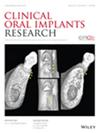Artificial Intelligence in Detecting and Segmenting Vertical Misfit of Prosthesis in Radiographic Images of Dental Implants: A Cross-Sectional Analysis
Abstract
Objective
This study evaluated ResNet-50 and U-Net models for detecting and segmenting vertical misfit in dental implant crowns using periapical radiographic images.
Methods
Periapical radiographs of dental implant crowns were classified by two experts based on the presence of vertical misfit (reference group). The misfit area was manually annotated in images exhibiting vertical misfit. The resulting datasets were utilized to train the ResNet-50 and U-Net deep learning models. Then, 70% of the images were allocated for training, while the remaining 30% were used for validation and testing. Five general dentists categorized the testing images as “misfit” or “fit.” Inter-rater reliability with Cohen's kappa index and performance metrics were calculated. The average performance metrics of dentists and artificial intelligence (AI) were compared using the paired-samples t test.
Results
A total of 638 radiographs were collected. The kappa values between dentists and AI ranged from 0.93 to 0.98, indicating perfect agreement. The ResNet-50 model achieved accuracy and precision of 92.7% and 87.5%, respectively, whereas dentists had a mean accuracy of 93.3% and precision of 89.6%. The sensitivity and specificity for AI were 90.3% and 93.8%, respectively, compared to 90.1% and 95.1% for dentists. The Dice coefficient yielded 88.9% for the ResNet-50 and 89.5% among the dentists. The U-Net algorithm produced a loss of 0.01 and an accuracy of 0.98. No significant difference was found between the average performance metrics of dentists and AI (p > 0.05).
Conclusion
AI can detect and segment vertical misfit of implant prosthetic crowns in periapical radiographs, comparable to clinician performance.

 求助内容:
求助内容: 应助结果提醒方式:
应助结果提醒方式:


